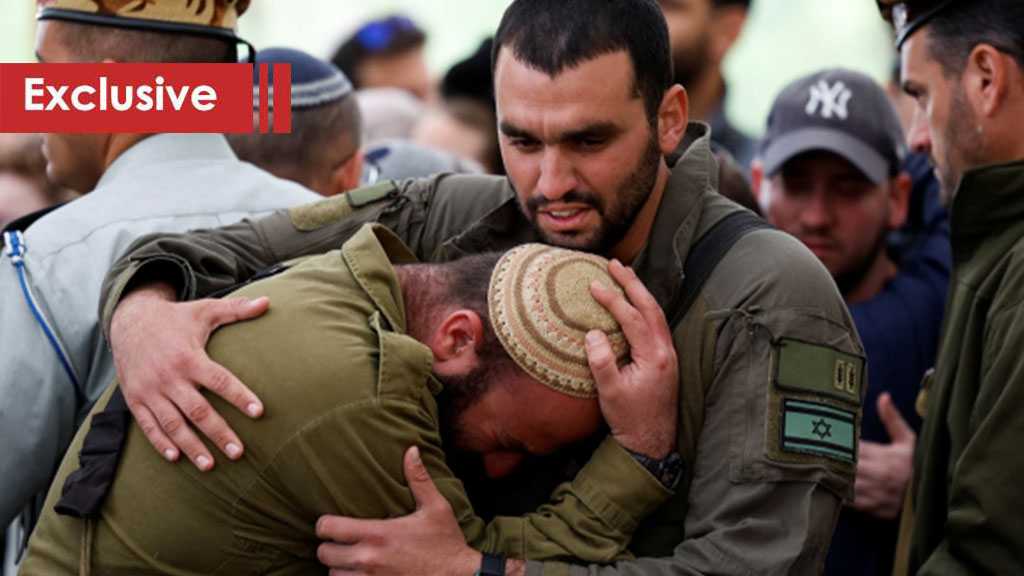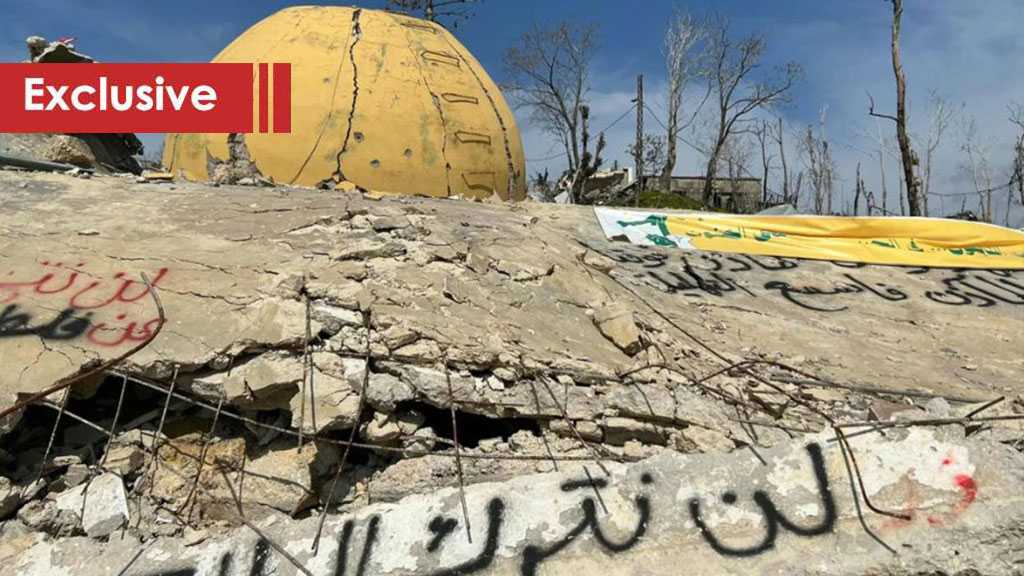As Gaza Fighters Hold the Line, “Israeli” Soldiers Succumb to Death’s Stench

By Mohammad Al-Ayyubi
For decades, “Israel” has relied on short, lightning wars to break the will of nations and impose new political realities through firepower and deterrence. But in Gaza, for the first time in its military history, it finds itself trapped in a battlefield where advanced technology has become a liability, and superior military hardware is ineffective against a resistance employing “death ambush” tactics and an unexpectedly high level of engineering sophistication.
As a result, “Israeli” forces have become easy targets—undone not only by explosives, but by psychological collapse before ever encountering them.
Dismantling the Myth of the “Moral Army”
The psychological breakdown within the “Israeli” occupation forces is now a documented reality: 43 suicides since the war began—and the number continues to rise.
What’s more remarkable is that this narrative is no longer being denied. Instead, it’s emerging in the Hebrew media through selective leaks, aimed at managing the moral disintegration spreading through military ranks.
How is it that a force armed with billions in US funding, equipped with the latest guidance and reconnaissance systems, cannot cross a minefield in Beit Hanoun, panics after an IED detonation in Shejaiya, or loses control during a nighttime raid in Khan Yunis?
The answer lies not in capability but in conviction: a force lacking a cause, confronting a resistance with absolute belief in the justice of its struggle.
Beit Hanoun: The Ambush That Shattered the Illusion of Control
The Beit Hanoun operation on Monday night marked one of the most complex resistance offensives since the war began. It also represented a turning point in the balance of fear.
The ambush unfolded in carefully engineered phases: an armored vehicle carrying troops was blown up, an ammunition robot was destroyed, a rescue team was targeted and remaining forces were gunned down. The result: five killed, ten injured and one missing.
Beyond the numbers, the resistance delivered a clear message: even the so-called “security buffer zone” is not safe, and the new lines of engagement are drawn by the resistance—not by “Israel”.
Resistance Ambushes: Simplicity Overcoming Complexity
The “death ambush” is not a random act. It reflects a deliberate and highly developed field engineering strategy. This resistance is not improvisational—it reshapes the devastated environment into lethal traps. These IEDs are not merely explosives, but tactical tools designed to confuse “Israeli” AI systems and redefine the very notion of battlefield control.
The occupation entered Gaza with Gideon vehicles. It exits carrying corpses, leaving behind soldiers who refuse to return to service, and burials held in haste—without the honor of full military rites.
Collapse of the Soul Before the Body
The family of one soldier who took his own life described the unbearable psychological toll: “the smell of corpses” and “collecting scattered body parts”—images that cannot be erased.
This soldier was not killed by resistance fire. He died from within, crushed by what he had witnessed. Meanwhile, a young man in Beit Hanoun, without water or shelter, was placing an IED into the rubble of his destroyed home—burned, wounded and ready for martyrdom. His story, of course, goes unmentioned in Western media, which continue to justify the killing while ignoring Palestinian blood.
This contrast exposes the moral collapse of the Zionist project: a military with no spiritual core, facing fighters without armor—but with unbreakable resolve.
Forces That Have Lost the Memory of Battle
Despite launching hundreds of raids and claiming control over 75% of Gaza, ambushes in Jabalia, Shejaiya, Khan Yunis and most recently Beit Hanoun, have shown that the “Israeli” forces have no lasting grip on the ground.
Elite units like “Yahalom” and “Egoz” continue to fall into the same traps—and worse, they learn nothing from it.
Each operation reveals new weaknesses. These repeated failures underscore a growing inability to comprehend the battlefield shaped by the resistance—a battlefield that has become a reverse-engineered nightmare for every “Israeli” military assumption.
This Is a Psychological War First
The war in Gaza has turned into a psychological confrontation before a military one. The resistance isn’t just destroying tanks—it’s destroying the will to use them. When troops are afraid to advance, and commanders hesitate to lead, even the most advanced weapons become meaningless.
Today, Tel Aviv—after deploying massive forces to Rafah, Khan Yunis, and northern Gaza—faces a crisis of confidence: soldiers who distrust their leadership, officers unable to explain mounting losses and families refusing to send their sons into what they now call a “death zone without purpose.”
“We Will Shatter Your Occupation Forces’ Prestige”: A Threat Fulfilled
When Al-Qassam Brigades declared after the Beit Hanoun ambush that they would “shatter the prestige of your forces,” it was no empty boast. It has become a weekly battlefield reality.
The myth of the “invincible army” has crumbled. Special units are now moving targets, failing to adapt or learn.
Despite the occupation’s claims of establishing a “new reality”, the repeated defeats—from Beit Hanoun to Rafah—prove that every advance is temporary. Each proclaimed victory collapses with the first IED explosion or the sudden emergence of a fighter from a tunnel.
From Military Operation to Political Nightmare
The “Israeli” political leadership is now facing only three options:
- Full occupation of the Strip – A costly quagmire with no exit strategy.
- Continued attrition – The current scenario, which brings mounting human and psychological tolls.
- A negotiated settlement – One that accepts the resistance’s terms rather than relying on military prestige—something already taking shape behind closed doors.
In all cases, “Israel” has lost the initiative.
Perhaps most telling is the shift in fear: it now spreads not in Gaza, but in the nearby settlements, which once expected to enjoy safety after a so-called “decisive” outcome. The symbolic political bombardment—with 114mm missiles—delivers a simple message: there will be no security outside of a just agreement. Your homes will not be rebuilt on the ruins of our blood.
In an age where night vision becomes battlefield blindness, and technological superiority weighs down the attacker’s mind, the Palestinian resistance is writing a new chapter in the history of war—one that says: Those who fight with belief don’t need a massive army—just one explosive device and the clarity of cause.




